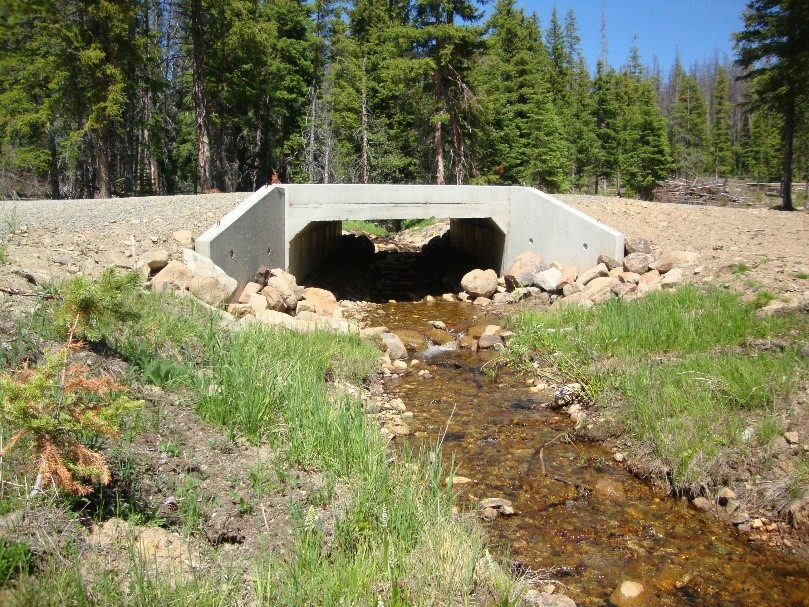In the article “Promoting Green Infrastructure through Educational Initiatives,” the focus is on emphasizing the significance of educating the public about green infrastructure and low impact development. By highlighting the importance of these concepts, this article aims to provide ideas for educational programs and campaigns that can effectively promote the adoption of green infrastructure practices. Through comprehensive educational initiatives, individuals can be empowered to make informed choices that contribute to a sustainable and eco-friendly future.

Importance of educating the public about green infrastructure
Green infrastructure plays a crucial role in creating sustainable and resilient communities. From reducing stormwater runoff to improving air quality, green infrastructure offers a wide range of environmental benefits. However, many people are still unaware of these advantages and the importance of incorporating green infrastructure into urban design and development.
Creating awareness about environmental benefits
Educating the public about the environmental benefits of green infrastructure is essential to fostering a culture of environmental stewardship. By highlighting how green infrastructure can mitigate the effects of climate change, improve water quality, and promote biodiversity, we can raise awareness and encourage individuals to support the implementation of such projects in their communities.
Encouraging sustainable lifestyle choices
Green infrastructure is not just about creating sustainable landscapes; it also extends to promoting sustainable lifestyle choices. By educating the public about the interconnectedness of our actions with the environment, we can inspire individuals to make sustainable choices in their daily lives. From conserving water and energy to using public transportation, these small changes can have a significant impact on the overall health of the planet.
Building public support for green infrastructure projects
Public support is crucial for the successful implementation of green infrastructure projects. By educating the public about the benefits and long-term value of such projects, we can garner support and mobilize individuals to advocate for their implementation. Furthermore, by involving the public in the decision-making process, we can build a sense of ownership and empower individuals to actively participate in the planning and implementation of green infrastructure initiatives in their communities.
Educational programs for promoting green infrastructure
To promote green infrastructure effectively, it is essential to develop educational programs that engage diverse audiences. These programs should not only provide information about green infrastructure but also inspire and empower individuals to take action. Here are some strategies for developing educational programs:
Incorporating green infrastructure into school curricula
Integrating green infrastructure concepts into school curricula can create a lasting impact. By incorporating lessons on environmental sustainability, conservation, and green infrastructure design, we can expose children to the importance of sustainable practices from an early age. This knowledge will not only benefit them personally but also lay the foundation for future generations of environmentally conscious individuals.
Organizing workshops and seminars
Workshops and seminars provide opportunities for individuals to learn more about green infrastructure and engage in hands-on learning experiences. These events can cover various topics, such as rainwater harvesting, urban gardening, and sustainable transportation. By organizing workshops and seminars in collaboration with local experts, educators can provide practical knowledge and empower participants to implement sustainable practices in their communities.
Developing interactive online resources
In today’s digital age, online resources are an effective means of reaching a wider audience. Developing interactive websites, online courses, and educational videos can provide accessible and engaging information about green infrastructure. These resources can be designed to cater to different learning styles and age groups, making it easy for individuals to access educational content from the comfort of their own homes.
Collaborating with environmental organizations
Partnering with environmental organizations can greatly enhance the impact of educational initiatives. Environmental organizations often have expertise in the field of green infrastructure and can provide valuable resources and support. By collaborating with these organizations, educational programs can leverage their knowledge and networks to reach a broader audience and create a more comprehensive learning experience.

Campaigns to promote green infrastructure
In addition to educational programs, campaigns play a vital role in promoting green infrastructure and raising public awareness. By utilizing various communication channels, campaigns can reach a larger audience and inspire action. Here are some effective campaign strategies:
Public awareness campaigns
Public awareness campaigns aim to educate the general public about green infrastructure and its benefits. These campaigns can use various media channels, such as billboards, posters, and radio advertisements, to disseminate information and create awareness. By partnering with local governments and other stakeholders, these campaigns can target specific communities and ensure maximum reach and impact.
Social media campaigns for engagement
Social media platforms provide a powerful tool for engaging individuals and spreading awareness about green infrastructure. Through creative and interactive content, such as videos, infographics, and quizzes, social media campaigns can educate and inspire a wide range of audiences. By leveraging the power of hashtags and encouraging user-generated content, these campaigns can facilitate community participation and create a sense of ownership.
Partnerships with local businesses
Partnering with local businesses can be mutually beneficial for promoting green infrastructure. Businesses can play a significant role in raising awareness by displaying educational materials, hosting informational events, or even incorporating green infrastructure into their own operations. These partnerships can enhance the visibility and credibility of green infrastructure initiatives while providing businesses with opportunities to showcase their commitment to sustainability.
Utilizing public spaces for exhibits and installations
Transforming public spaces into exhibits and installations can be an effective way to engage the community and provide immersive learning experiences. By showcasing the benefits and beauty of green infrastructure through art installations, interactive displays, and guided tours, these initiatives create opportunities for individuals to engage with the topic on a personal level. Additionally, public spaces provide a platform for community events and workshops, further enhancing community involvement.
Benefits of educational initiatives for green infrastructure
Educational initiatives focused on green infrastructure have numerous benefits for communities and the environment. By promoting awareness, fostering engagement, and empowering individuals, these initiatives can create a lasting impact. Here are some key benefits:
Increasing community engagement
Education initiatives create opportunities for individuals to actively participate in the process of building sustainable communities. By involving community members in educational programs and campaigns, green infrastructure projects can gain support and foster a sense of belonging and shared responsibility.
Creating a sense of ownership
When individuals are educated about the benefits of green infrastructure and actively engaged in its implementation, they develop a sense of ownership. This sense of ownership leads to increased care and maintenance of green infrastructure projects, ensuring their long-term success and effectiveness.
Empowering individuals to make sustainable choices
Educational initiatives provide individuals with the knowledge and tools necessary to make informed decisions about sustainable practices. By empowering individuals to adopt sustainable behaviors, such as recycling, conserving water, and reducing energy consumption, educational initiatives contribute to creating a more environmentally conscious society.
Fostering a culture of conservation and environmental stewardship
By promoting green infrastructure and its associated environmental benefits, educational initiatives help foster a culture of conservation and environmental stewardship. When individuals understand the importance of protecting natural resources and the environment, they are more likely to actively contribute to sustainable development efforts.

Engaging diverse audiences in green infrastructure education
To ensure the effectiveness of educational initiatives, it is crucial to engage diverse audiences. Different age groups, communities, and cultures have distinct needs and preferences when it comes to learning about green infrastructure. Here are some strategies for engaging diverse audiences:
Tailoring educational content for different age groups
Children, teenagers, and adults have different learning styles and interests. By tailoring educational content to suit different age groups, educational initiatives can be more effective in capturing their attention and fostering understanding. For example, interactive games and activities may be more engaging for children, while case studies and real-life examples may resonate more with adults.
Reaching out to underserved communities
Underserved communities often face various challenges, including limited access to information and resources. By actively reaching out to these communities and designing educational initiatives that address their unique needs, we can ensure that no one is left behind in the movement towards a greener future. This may involve providing translated materials, offering workshops in community centers, or partnering with local organizations that serve these communities.
Addressing language and cultural barriers
Language and cultural barriers can hinder effective communication and understanding. Educational initiatives should address these barriers by providing materials in different languages and considering cultural sensitivities. By making information accessible and relatable, we can engage diverse audiences and promote inclusivity in green infrastructure education.
Collaborating with schools, universities, and community organizations
Partnerships with educational institutions and community organizations can greatly enhance the reach and impact of green infrastructure educational initiatives. By collaborating with schools and universities, initiatives can directly engage students and leverage their networks and resources. Community organizations can also play a crucial role in reaching out to specific communities and providing support for educational programs.
Training educators on green infrastructure
Educators play a key role in promoting green infrastructure and environmental education. To ensure the effectiveness of educational initiatives, it is essential to train educators to deliver accurate and engaging information. Here are some strategies for training educators on green infrastructure:
Providing professional development opportunities
Professional development opportunities, such as workshops and conferences, can help educators stay up-to-date with the latest information and teaching methodologies. By providing educators with access to experts in the field of green infrastructure, these opportunities can enhance their knowledge and skills, ultimately benefiting their students.
Developing curriculum resources for educators
Educational resources specifically designed for educators can make it easier for them to incorporate green infrastructure concepts into their teaching. These resources can include lesson plans, worksheets, and interactive activities that align with curriculum standards. By providing educators with ready-to-use materials, initiatives can make it easier for them to integrate green infrastructure education into their classrooms.
Hosting workshops and trainings for teachers
Workshops and trainings specifically tailored for teachers can provide them with a deeper understanding of green infrastructure and its educational value. These sessions can cover topics such as the importance of green infrastructure in the curriculum, best practices for delivering green infrastructure education, and hands-on activities that teachers can incorporate into their lessons.
Supporting integration of green infrastructure into education standards
To ensure the long-term integration of green infrastructure into education, efforts should be made to include it in education standards and guidelines. By working with education policymakers and administrators, initiatives can advocate for the inclusion of green infrastructure concepts in the curriculum. This will provide a framework for educators to incorporate green infrastructure education into their teaching and ensure its sustainability in the education system.
Measuring the effectiveness of educational initiatives
To evaluate the impact of educational initiatives, it is crucial to measure their effectiveness. Here are some strategies for measuring the effectiveness of green infrastructure educational initiatives:
Monitoring public awareness and knowledge
Surveys and questionnaires can be used to assess the level of public awareness and knowledge about green infrastructure before and after educational initiatives. By comparing the results, initiatives can determine whether their efforts have successfully increased awareness and understanding.
Evaluating behavior change
Behavior change is a key indicator of the effectiveness of educational initiatives. By observing and analyzing changes in individuals’ behavior, initiatives can determine whether their educational efforts have translated into sustainable actions. This can be done through surveys, interviews, or direct observation of individuals’ actions and practices.
Assessing long-term impact on community attitudes
The long-term impact of educational initiatives can be assessed by evaluating changes in community attitudes towards green infrastructure. This can be done through follow-up surveys or focus groups conducted several months or years after the completion of initiatives. By assessing changes in attitudes, initiatives can gauge the lasting impact of their educational efforts.
Collecting feedback through surveys and focus groups
Collecting feedback from participants of educational initiatives is essential for continuous improvement. Surveys, focus groups, and interviews can be used to gather feedback on the effectiveness of the initiatives, identify areas for improvement, and understand the participants’ perspective. This feedback can then be used to refine and enhance future educational programs.
Case studies on successful educational campaigns
Examining successful educational campaigns can provide valuable insights and inspiration for future initiatives. Here are three examples of successful educational campaigns:
Example 1: City-wide campaign on water conservation
A city launched a comprehensive campaign to raise awareness about water conservation and the benefits of green infrastructure in managing stormwater runoff. The campaign included public service announcements, community workshops, and the distribution of educational materials to schools and businesses. As a result, the city saw a significant decrease in water consumption and an increased interest in green infrastructure projects.
Example 2: Educational program in partnership with a nature reserve
A local nature reserve collaborated with a school district to develop an educational program focused on green infrastructure and biodiversity. The program included field trips to the reserve, classroom presentations by reserve staff, and the establishment of a school garden. This partnership not only provided students with hands-on learning experiences but also fostered a sense of stewardship and appreciation for nature.
Example 3: Community-led initiative promoting green infrastructure
A community came together to develop an educational initiative that focused on promoting sustainable practices and the benefits of green infrastructure. This initiative involved organizing neighborhood workshops, creating a community garden, and establishing a demonstration project showcasing rainwater harvesting techniques. The initiative not only educated community members about green infrastructure but also fostered a sense of community pride and ownership.
Challenges and considerations in educational initiatives
While educational initiatives have the potential to create a significant impact, there are several challenges and considerations that need to be addressed:
Securing funding and resources
Educational initiatives require resources, including funding, materials, and trained personnel. Securing adequate funding and resources can be a challenge, particularly for grassroots initiatives or in areas with limited financial resources. Collaborating with government agencies, businesses, and foundations can help address this challenge.
Overcoming apathy and resistance to change
Some individuals may be apathetic or resistant to change, making it challenging to engage them in educational initiatives. Overcoming this resistance requires clear and compelling communication, highlighting the benefits of green infrastructure, and emphasizing the individual’s role in creating a sustainable future. Tailoring educational approaches to address specific barriers and concerns can also help overcome resistance.
Adapting to evolving technology and communication methods
In today’s rapidly changing technological landscape, educational initiatives must adapt to new communication methods and technologies. This may involve developing digital resources, utilizing social media platforms effectively, and keeping up with emerging trends in educational technology. Staying flexible and open to innovation is essential to keep educational initiatives relevant and engaging.
Ensuring inclusivity and accessibility
Educational initiatives should be inclusive and accessible to diverse audiences, including individuals with disabilities, those from different cultural backgrounds, and those with limited access to resources. Addressing language and cultural barriers, providing translated materials, and offering alternative formats for individuals with disabilities are important considerations in creating inclusive educational initiatives.
Opportunities for collaboration and partnerships
Collaboration and partnerships play a critical role in the success of educational initiatives for green infrastructure. Here are some opportunities for collaboration and partnerships:
Engaging government agencies and policymakers
Government agencies and policymakers have the power to influence policies and regulations related to green infrastructure. By collaborating with these entities, educational initiatives can advocate for the integration of green infrastructure into urban planning and development policies, ensuring that it becomes an integral part of community development.
Partnering with businesses and industry associations
Businesses and industry associations have a vested interest in sustainability and can contribute valuable resources and expertise to educational initiatives. By partnering with these organizations, initiatives can access funding, technical knowledge, and promotional support, thereby expanding their reach and impact.
Collaborating with non-profit organizations and community groups
Non-profit organizations and community groups often have a deep understanding of the local community and can provide valuable insights and connections. By collaborating with these organizations, educational initiatives can tap into their networks, leverage their expertise, and reach underserved populations more effectively.
Involving academic institutions and research centers
Academic institutions and research centers can offer valuable expertise and research-based knowledge to support educational initiatives. Collaborating with these institutions can provide access to up-to-date research, create opportunities for knowledge sharing, and enhance the credibility of educational initiatives.
In conclusion, educating the public about green infrastructure is crucial for creating sustainable and resilient communities. By highlighting the environmental benefits of green infrastructure, fostering sustainable lifestyle choices, and building public support for green infrastructure projects, educational initiatives can lay the foundation for a greener and more sustainable future. By developing tailored educational programs, organizing engaging campaigns, and training educators, we can ensure that green infrastructure education reaches diverse audiences, fosters community engagement, and empowers individuals to make sustainable choices. The effectiveness of these initiatives can be measured through monitoring public awareness, evaluating behavior change, assessing long-term impact, and collecting feedback.
Success stories from various educational campaigns demonstrate the impact that educational initiatives can have on promoting green infrastructure. However, these initiatives also face challenges, such as securing funding and resources, overcoming resistance to change, adapting to evolving technology, and ensuring inclusivity and accessibility. By seizing opportunities for collaboration and partnerships with government agencies, businesses, non-profit organizations, and academic institutions, educational initiatives can maximize their reach and impact, paving the way for a greener and more sustainable future.



